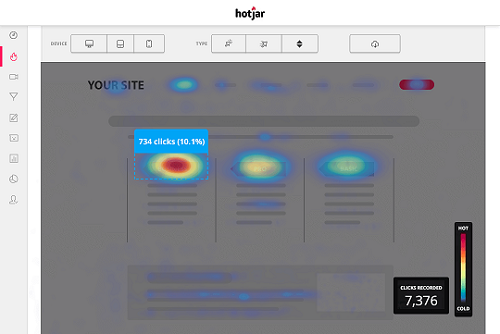Facebook’s News Feed Algorithm
Facebook’s news feed works to deliver the most important
news to you on your newsfeed, at the right time so that you do not miss the
stories that are most important. Considering that there are on average
a potential 1,500 stories for each individual Facebook user to view when they
log into the site there is a necessity for an algorithm to rank the stories which are most important to the
viewer. Edgerank is the name of the algorithm previously used by Facebook to
determine where and what posts appear on each individual user’s newsfeed. The
system is no longer called ‘Edgerank’ since they started
employing a more complex system based on the same algorithm but the principle
still remains.
The three different variables which make up this algorithm are affinity, weight and the time decay of the post. But how can Facebook’s algorithm be used to improve marketing on the social media site and why does it matter for your brand?

Image - mashable.com
Studies have shown that 96% of fans who like a brand on Facebook do not go back to a brand’s Facebook page after initial engagement. In addition, a brand’s post is 40-150x more likely to reach their fans in the newsfeed rather than on the brand Facebook page, as 27% of all time spent on Facebook is spent looking at the newsfeed itself. The Edgerank algorithm system can therefore help brands to make their posts more likely to hit their target audience by increasing its value on the newsfeed.
The three different variables which make up this algorithm are affinity, weight and the time decay of the post. But how can Facebook’s algorithm be used to improve marketing on the social media site and why does it matter for your brand?
Image - mashable.com
Studies have shown that 96% of fans who like a brand on Facebook do not go back to a brand’s Facebook page after initial engagement. In addition, a brand’s post is 40-150x more likely to reach their fans in the newsfeed rather than on the brand Facebook page, as 27% of all time spent on Facebook is spent looking at the newsfeed itself. The Edgerank algorithm system can therefore help brands to make their posts more likely to hit their target audience by increasing its value on the newsfeed.
First of all – how does the algorithm, work? It is made up of three variables – affinity,
weight and time decay:
Affinity measures
the relationship between the viewing user and the person who is posting the
story. This means that the closer your relationship to the user, the higher the
score on the algorithm and the more likely the post will appear on your Facebook
news feed. However, it is a one way interaction – if you interact with another
user, their stories will be more likely to appear on your newsfeed, but it
might not work the same way around.
Weight is the
second variable and works because different types of posts carry different
weights on Facebook. The higher the weight, the higher the score and therefore
the more prominent the post will be on the Facebook newsfeed. Photos and videos
are the highest weighted, followed by links and then plain text updates. Brands
who are trying to reach out to a greater audience and trying to get their posts
to have a greater presence on their fans’ newsfeed should try to use new features.
The reason for this is because Facebook assigns higher weights to new features
to encourage users to take them up and use them more. Engagement from other
users also factor into the post’s weight, so a plain text update with comments and
interaction from friends can carry more combined weight than a photo post with
no engagement. So how can you increase the weight of your posts?
-
If you keep them short and usually between 10 and
250 characters they will get 60% more likes, comments, and shares than posts
over 250 characters.
-
Post more photos (180%) and videos (120%) as
they get more engagement and will therefore carry more weight.
-
Ask for people to answer questions on your posts
– this will increase the audience engagement with the posts.
Time decay is the
third factor. Naturally older posts will start to slip to the end of the newsfeed
as they become “old news”, as older posts continually lose their value and it
makes space for newer posts to take their place. However, this does depend on
how frequently one logs into Facebook – a frequent user will see old posts
disappearing more quickly, whereas someone who logs on only occasionally will
still see posts from a few days ago appearing on their newsfeed. How can you
improve this section of the algorithm and make your brand stand out on Facebook?
-
Post on a daily basis, it increases reach to
your audience.
-
Find the best times of day to reach your
audience, and then post at these times.
-
Changes to the Facebook algorithm in the past
few months have now seen older stories which have recently had a lot of
engagement of likes and comments rising to the top of the news feed again. This
change has resulted in a 5% increase in the number of likes, comments and
shares on organic stories people saw from friends.

Image - Facebook for business news
Although the ‘Edgerank’ algorithm is now more complicated
that the three strands of affinity, weight and time decay – similar principles
still remain. Facebook has commented on its Facebook for business page that, “We
are continually working to improve News Feed and from time to time we make
updates to the algorithm that determines which stories appear first”.
A recent change to the algorithm was introduced to Facebook
at the end of last month. This change
aims to give greater weight to user feedback on undesirable ads. Facebook will
now be trying to show more relevant advertisements to users inside the News
Feed. This will help brands who are trying to market through Facebook as it
will try to deliver the right ads to the people who want to see them most, even
if fewer ads are delivered overall. This shows a general move by social
networking sites to introduce more relevant advertisements to their users as
opposed to delivering any random adverts – Instagram has recently announced their introduction of adverts saying that the user will be able to control which ones
they see by giving feedback on whether the ad was right for them. Therefore
this seems to reflect a general move to produce more relevant adverts for users
of social network sites.
Facebook’s News Feed Algorithm
 Reviewed by Anonymous
on
Friday, October 11, 2013
Rating:
Reviewed by Anonymous
on
Friday, October 11, 2013
Rating:
 Reviewed by Anonymous
on
Friday, October 11, 2013
Rating:
Reviewed by Anonymous
on
Friday, October 11, 2013
Rating:















 Entrepreneur, international speaker on Social Media Marketing. First one in the UK to write and speak in conferences about Twitter as a marketing tool. Consultant to Corporate Companies, Government Organizations, Marketing Managers and Business Owners.
Entrepreneur, international speaker on Social Media Marketing. First one in the UK to write and speak in conferences about Twitter as a marketing tool. Consultant to Corporate Companies, Government Organizations, Marketing Managers and Business Owners. Aspiring novelist with a passion for fantasy and crime thrillers. He hopes to one day drop that 'aspiring' prefix. He started as a writer and soon after he was made Executive Editor and Manager of the team at Social Songbird. A position he held for 5 years.
Aspiring novelist with a passion for fantasy and crime thrillers. He hopes to one day drop that 'aspiring' prefix. He started as a writer and soon after he was made Executive Editor and Manager of the team at Social Songbird. A position he held for 5 years. Musician, audio technician, professional tutor and a Cambridge university English student. Interested in writing, politics and obsessed with reading.
Musician, audio technician, professional tutor and a Cambridge university English student. Interested in writing, politics and obsessed with reading. Recently graduated with a BA in English Literature from the University of Exeter, and he is about to study an MA in Journalism at the University of Sheffield. He is an aspiring journalist and novelist; in his free time he enjoys playing chess, listening to music and taking long walks through nature.
Recently graduated with a BA in English Literature from the University of Exeter, and he is about to study an MA in Journalism at the University of Sheffield. He is an aspiring journalist and novelist; in his free time he enjoys playing chess, listening to music and taking long walks through nature. Lucy is an undergraduate BSc Politics and International Relations student at the London School of Economics and Political Science.
Lucy is an undergraduate BSc Politics and International Relations student at the London School of Economics and Political Science. Anna Coopey is a 4th year UG student in Classics at the University of St Andrews in Scotland. She is a keen writer and researcher on a number of topics, varying from Modern Greek literature to revolutionary theory.
Anna Coopey is a 4th year UG student in Classics at the University of St Andrews in Scotland. She is a keen writer and researcher on a number of topics, varying from Modern Greek literature to revolutionary theory.
